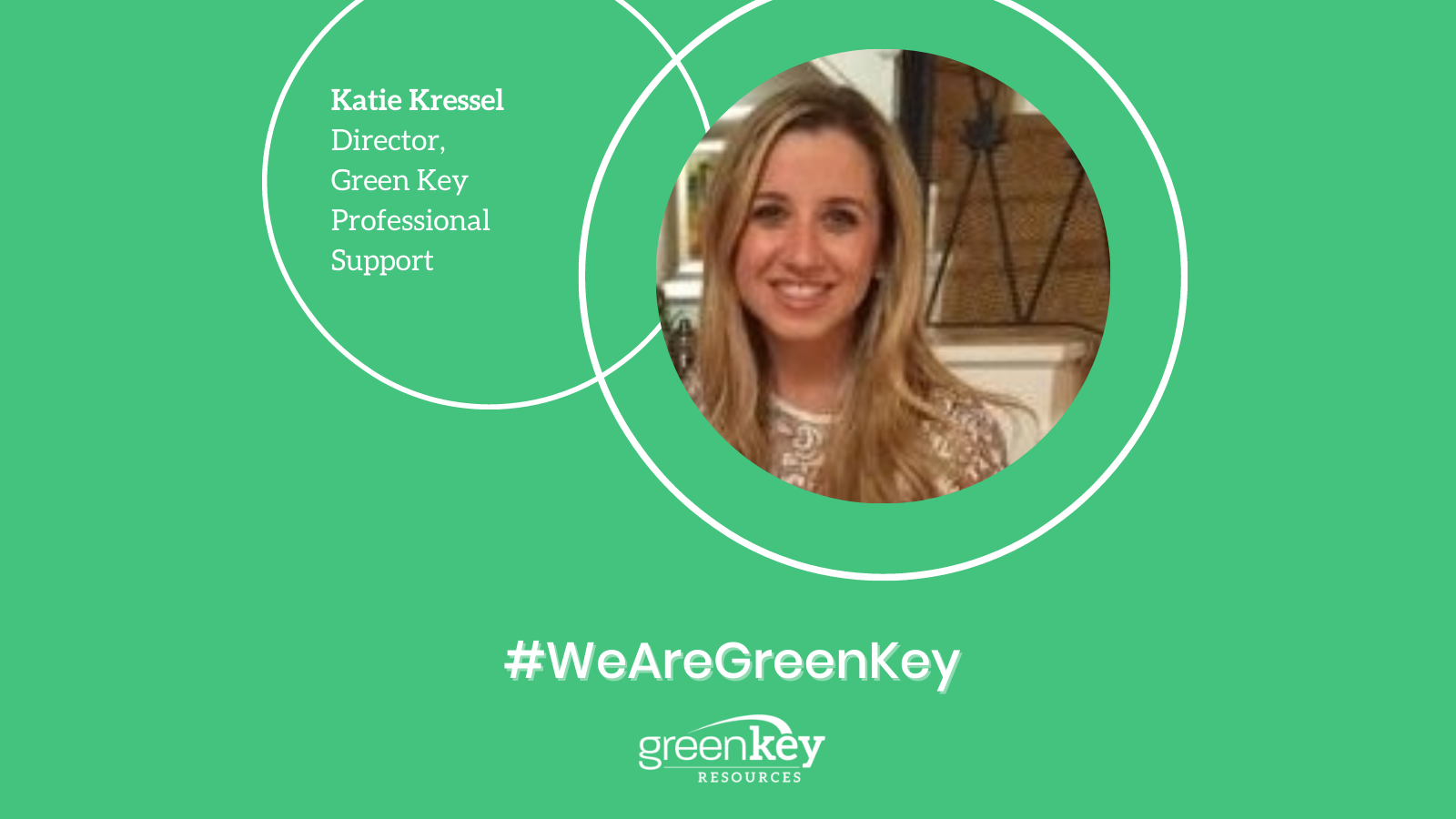Welcome back to #WeAreGreenKey, where we shine a spotlight on our powerhouse recruiting team.
We chatted with Katie Kressel, Director of Professional Support/Human Resources in New York. With previous experience in sales, Katie was able to translate her skills into a strong business development practice at Green Key. She emphasized the importance of building strong client relationships, her experience as a working mom, and specific trends she is seeing her clients shift toward in 2023.
What is the benefit of being on the client side at a firm like Green Key?
Client relationships require you to break down doors, which can be difficult at times. But once you get to know a client, you start to form a strong relationship where you get to know about their family lives, their children, their vacations. That’s the best part of it for me, even if it can often be challenging to get to that point. The missteps make the relationships stronger.
What is the importance of building and sustaining strong client relationships?
There are so many firms out there, so you have to make yourself stand out as a salesperson. The only way to do that is to build these relationships, so your clients remember you and return to you for the business. For instance, if a candidate didn’t quite work out, the client might not have continued using us going forward if we didn’t know each other so well.
This is the year of business development. How do you build your book of business?
When I first started, I was cold-calling and looking around LinkedIn to see who was hiring. I was also connecting with other divisions at Green Key. It was a great way to use internal relationships to build my client base. Almost every industry needs administration, Human Resources, and receptionists. This is a huge benefit of working at a firm like Green Key, where we support a wide variety of industries.
How did you translate your sales rep experience into recruiting?
I came from the fashion industry, where I was very burned out. When I started working in business development, I wasn’t afraid to pick up the phone and call somebody. For me, it was an easy transition, because I was used to having those conversations on the phone, especially once I became familiar with the staffing and recruiting lingo.
Are there any trends you’re seeing with your clients right now?
This time last year, I was mostly working on perm roles. Now I am seeing a shift, where it’s more 50/50 with temp and perm admin roles. There are a lot of law firms, accounting, hedge firms seeking temp roles. So, it’s balancing out from last year. I think the economy is shifting and clients are assessing whether they over or under-hired last year and pivoting accordingly.
What has your experience as a parent been like while working for Green Key?
I can’t imagine working anywhere else as a working mom. I’ve made more money than I ever thought possible with three kids at home. If I had still been in the fashion industry, I’d likely be a stay-at-home mom. Green Key has always been family-first. I can pick my daughter up from school during my lunch break and wrap up work later in the day. It’s given me the best of both worlds.
What are your goals for business development this year?
I want to break into new clients and focus on bringing in new business. I also plan to dabble more in LinkedIn Sales Navigator and adopt some different sales approaches.



